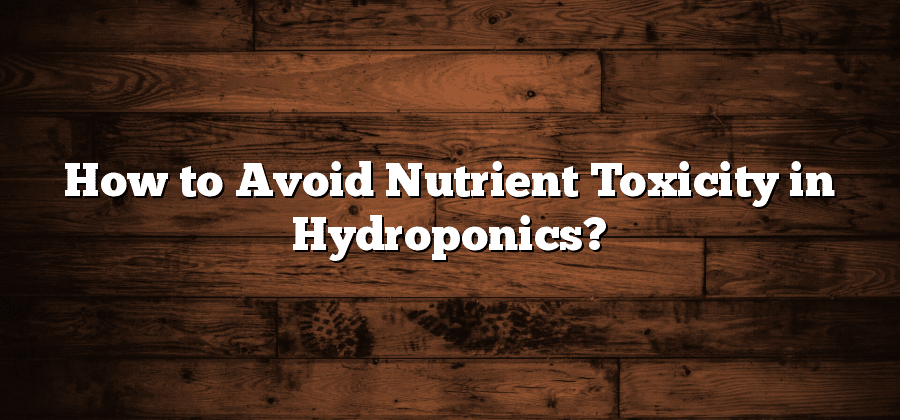Understanding Nutrient Requirements in Hydroponics
Hydroponics, a modern method of growing plants without using soil, has gained popularity among horticulturists and farmers alike. To successfully cultivate plants using this method, it is crucial to understand their nutrient requirements. Nutrients are essential for plant growth and development, providing them with the necessary elements to carry out vital processes such as photosynthesis, root development, and reproduction.
In hydroponics, plants rely on nutrient solutions instead of soil to obtain the required elements for optimal growth. These nutrient solutions consist of a carefully balanced mixture of essential macronutrients and micronutrients. Macronutrients, including nitrogen, phosphorus, and potassium, are required in relatively large amounts, while micronutrients like iron, zinc, and manganese are needed in smaller quantities. Understanding the specific nutrient requirements of different plant species is essential for providing them with the appropriate balance of nutrients in the hydroponic system. By carefully monitoring and adjusting the nutrient solution, growers can ensure that plants have access to all the necessary elements they need to thrive in a soilless environment.
Selecting the Right Nutrient Solution for Hydroponics
One of the most important decisions a hydroponic gardener can make is selecting the right nutrient solution. The nutrient solution serves as the primary source of essential elements, providing the plants with the necessary nutrients for optimal growth and development. It is crucial to choose a nutrient solution that contains a balanced blend of macro and micronutrients, tailored to the specific needs of the plants being grown.
When selecting a nutrient solution, it is essential to consider the stage of plant growth and the specific crop being cultivated. Different plants have varying nutritional requirements at different growth stages. For instance, leafy greens might require higher nitrogen levels during vegetative growth, while fruiting plants may need more phosphorus and potassium during the flowering and fruiting stages. Additionally, the nutrient solution should be pH balanced to ensure optimum nutrient uptake. Monitoring and adjusting the pH level of the solution is crucial to prevent nutrient imbalances and deficiencies. Furthermore, it is vital to choose a reputable brand or supplier that guarantees quality and consistency in their nutrient solutions.
Monitoring pH Levels for Nutrient Uptake Efficiency
Monitoring pH levels is crucial in ensuring optimal nutrient uptake efficiency in hydroponics. pH levels directly affect nutrient availability and absorption by plants. In hydroponic systems, where plants are grown in a soil-less medium, maintaining the right pH range is essential for promoting healthy plant growth and preventing nutrient deficiencies or toxicities.
A pH meter or pH test kit can be used to monitor pH levels in the nutrient solution. The ideal pH range for most hydroponic crops is between 5.5 and 6.5. This slightly acidic environment promotes maximum nutrient availability and uptake. Regular monitoring and adjustment of pH levels should be performed to prevent pH drift and maintain a stable growing environment for plants. By keeping pH levels within the optimal range, hydroponic growers can ensure that their plants can efficiently absorb and utilize the nutrients supplied, leading to better growth, higher yields, and healthier plants overall.
Adjusting Nutrient Concentration for Optimal Growth
Maintaining the proper nutrient concentration is crucial for achieving optimal growth in hydroponic systems. It is important to strike a balance between providing enough nutrients for the plants to thrive and avoiding nutrient toxicity. Fortunately, adjusting the nutrient concentration in hydroponics is a relatively simple process that can be done by monitoring and adjusting the nutrient solution on a regular basis.
The adjustment of nutrient concentration should be done gradually, taking into consideration the growth stage of the plants and the specific nutrient requirements of each crop. It is recommended to start with a lower concentration of nutrients and gradually increase it as the plants mature. This allows for a more gradual and controlled uptake of nutrients, preventing the risk of nutrient burn or toxicity. Regular monitoring of the plants’ growth and visual inspection of their overall health can also serve as indicators for adjusting the nutrient concentration. By observing any signs of deficiency or excess, growers can make the necessary adjustments to ensure optimal nutrient balance and promote healthy growth in their hydroponic systems.
Identifying Symptoms of Nutrient Toxicity in Plants
Symptoms of nutrient toxicity in plants can vary depending on the specific nutrient that is present in excess. One common sign of nutrient toxicity is leaf discoloration. For example, excessive levels of nitrogen can cause leaves to turn a dark, lush green color. On the other hand, an overabundance of iron may result in leaves turning a yellow or bronze color. Other symptoms of nutrient toxicity can include stunted growth, wilting, and leaf burning.
In addition to leaf discoloration and growth abnormalities, plants experiencing nutrient toxicity may also exhibit physiological changes. For instance, excessive amounts of certain nutrients, such as potassium or calcium, can disrupt the water balance within the plant. This can lead to the development of edema, a condition characterized by swollen, blister-like areas on leaves and stems. Furthermore, nutrient toxicity can also impact the plant’s ability to uptake other essential nutrients, resulting in overall nutrient deficiencies despite the presence of excess nutrients.






